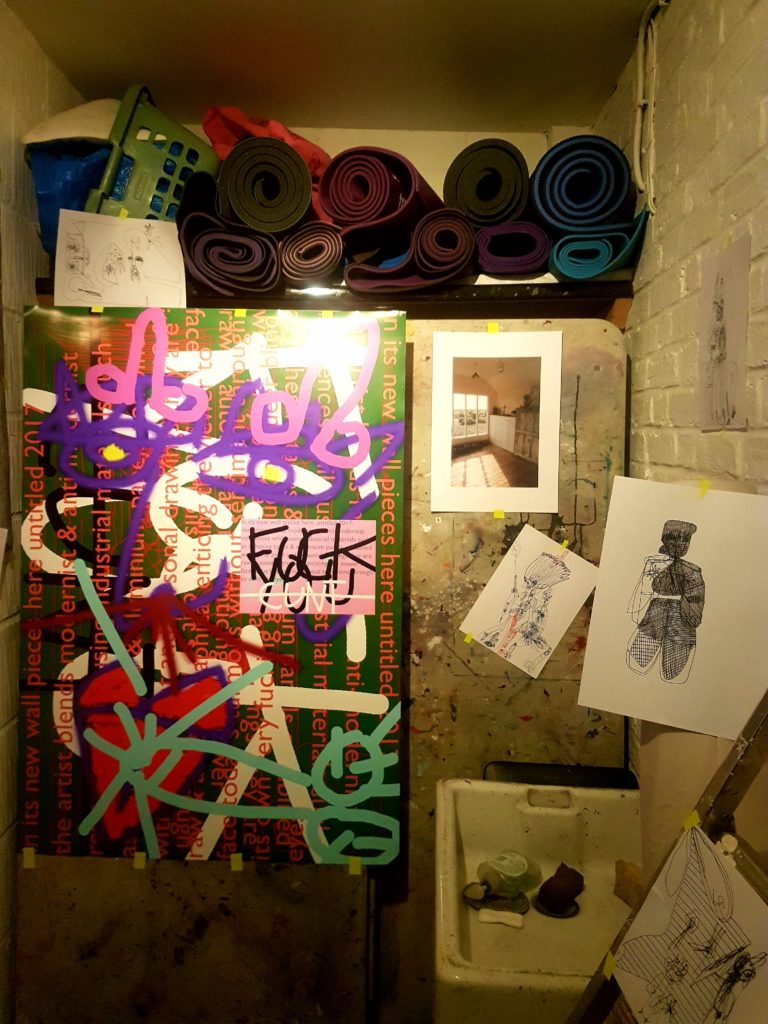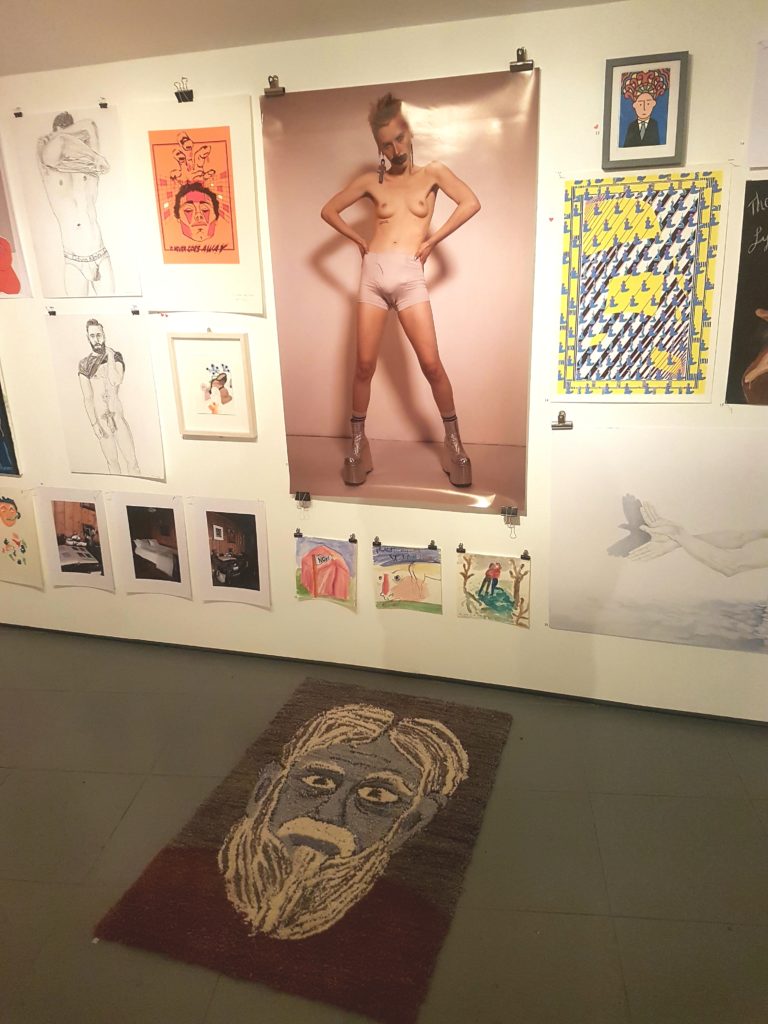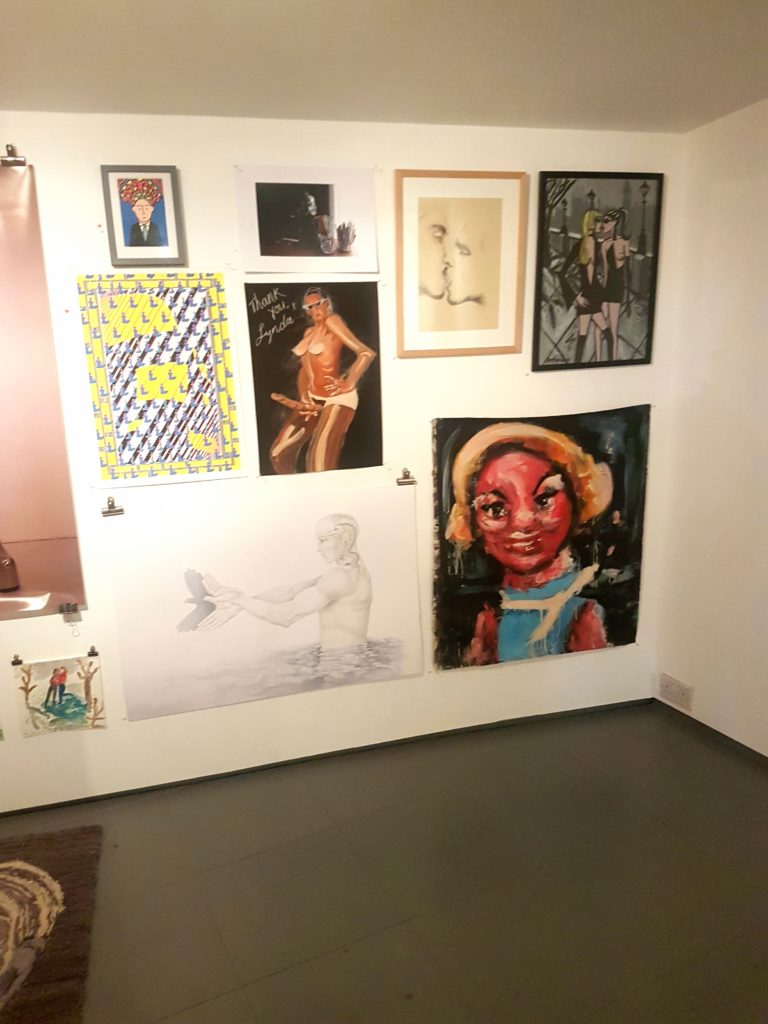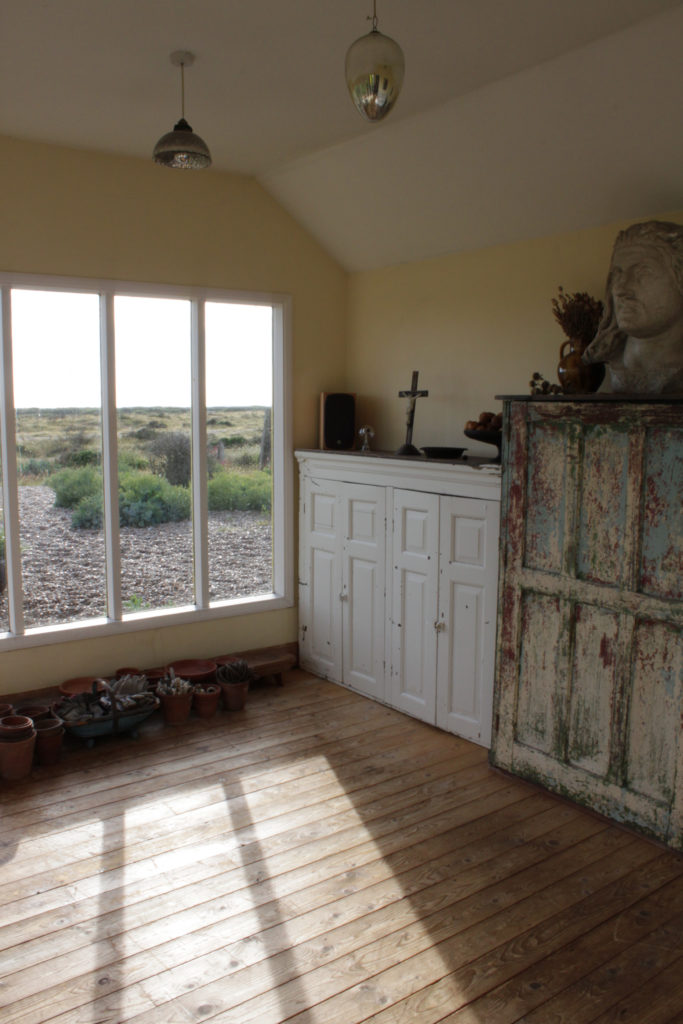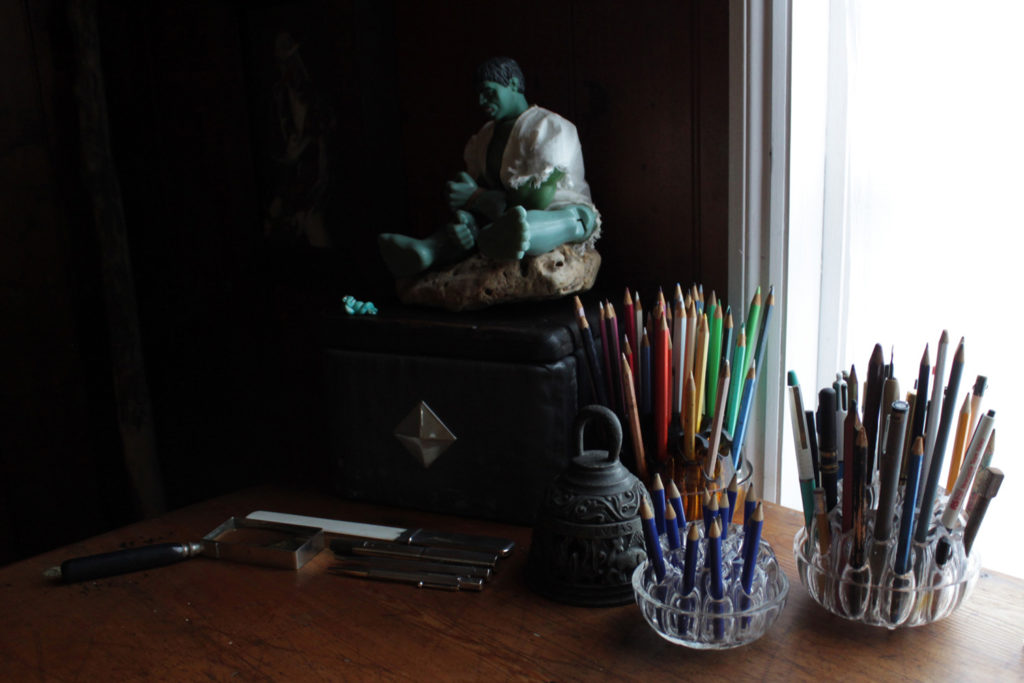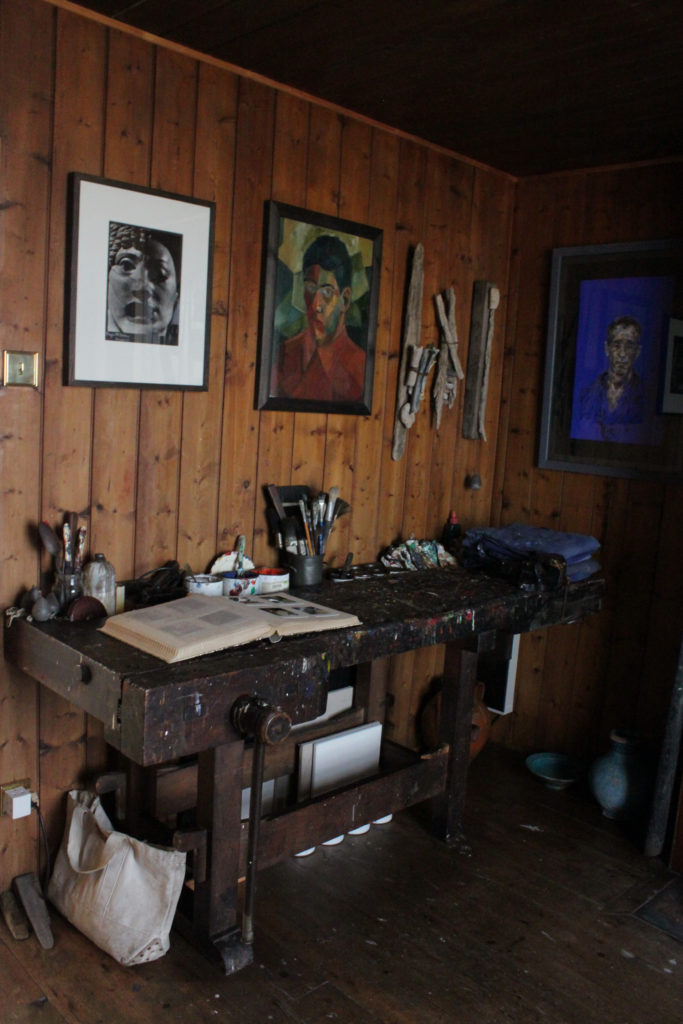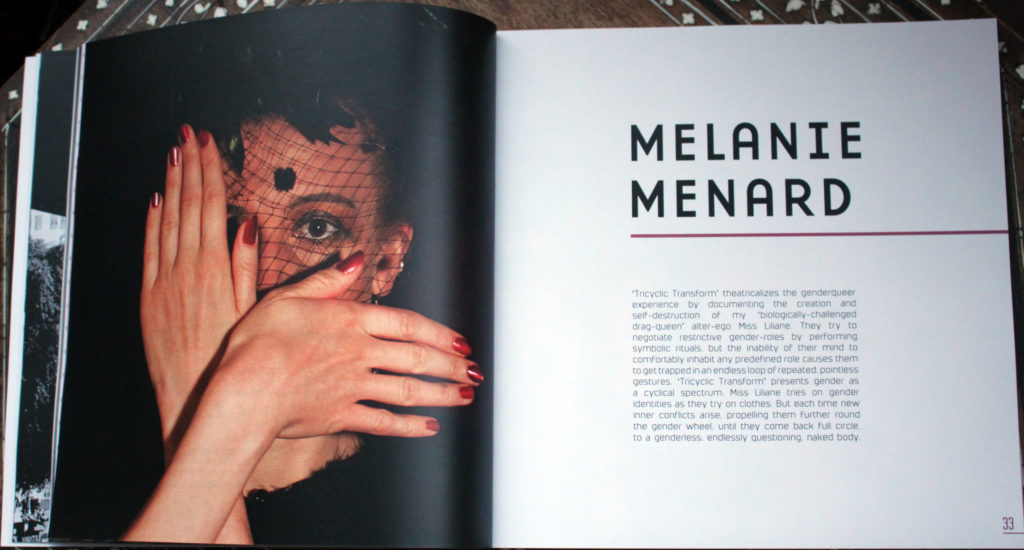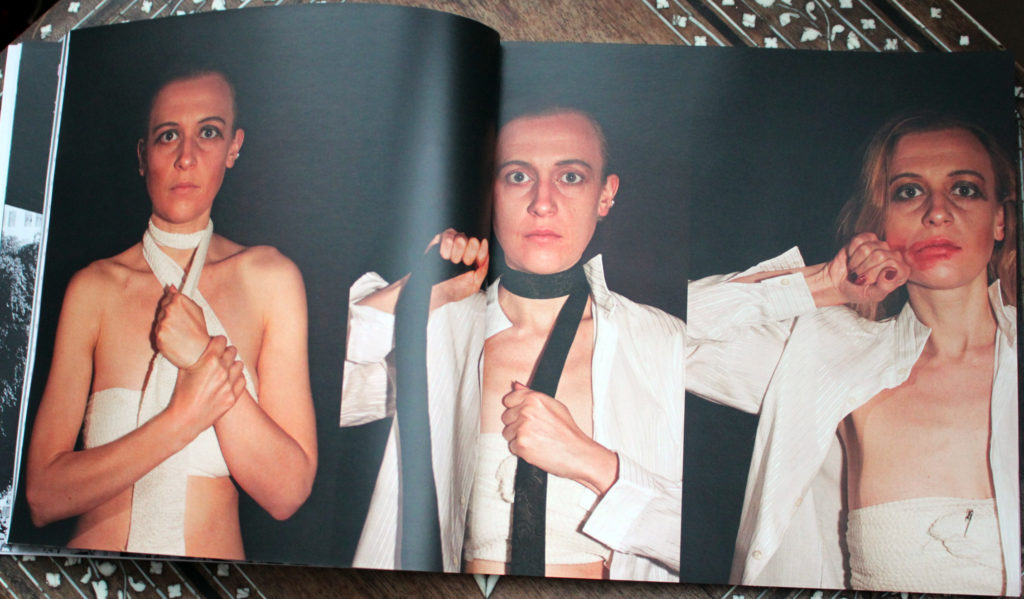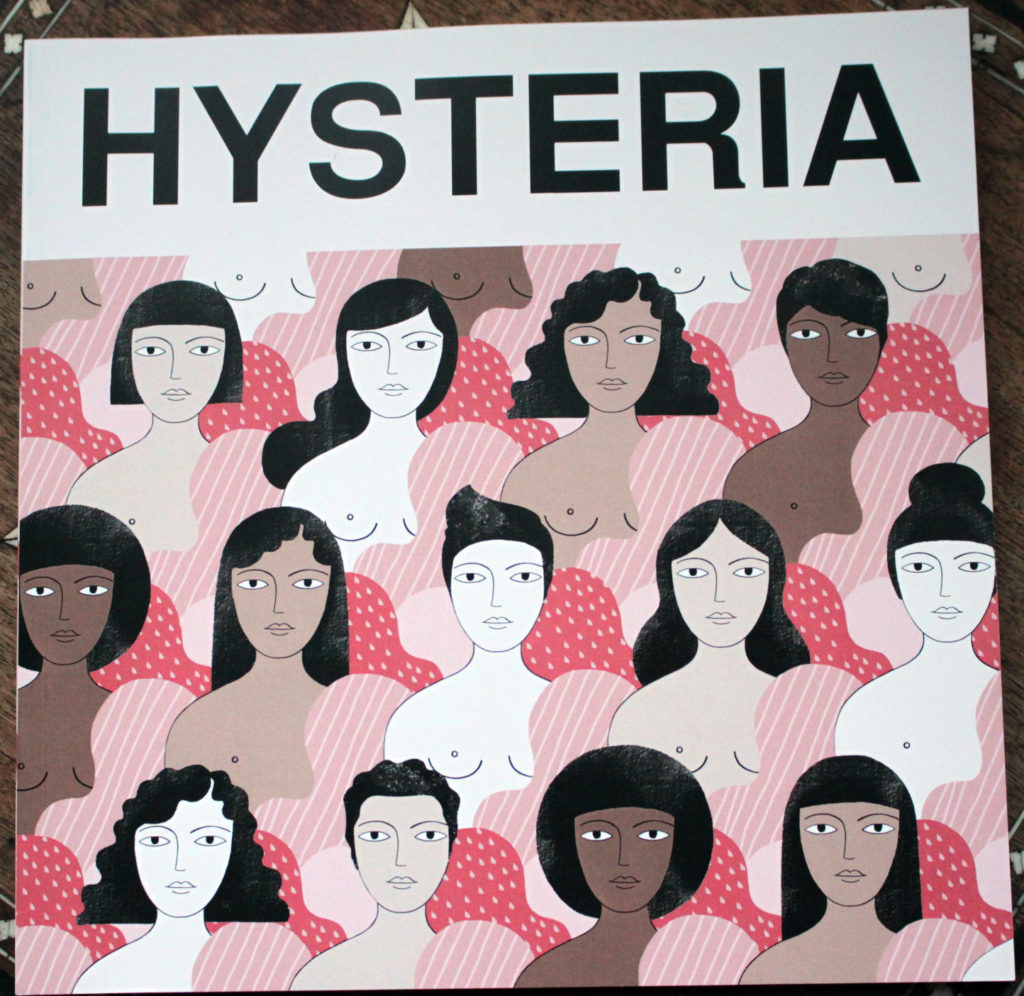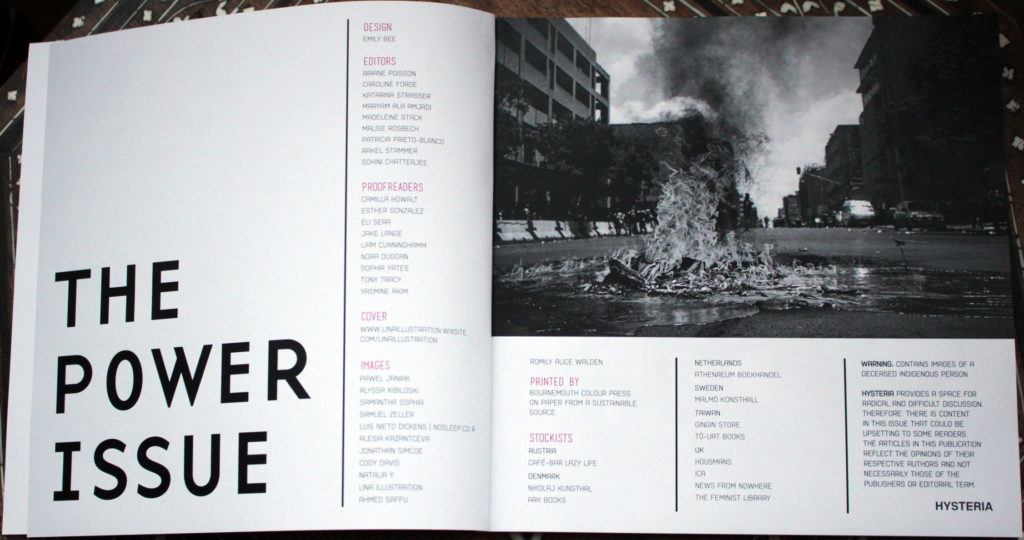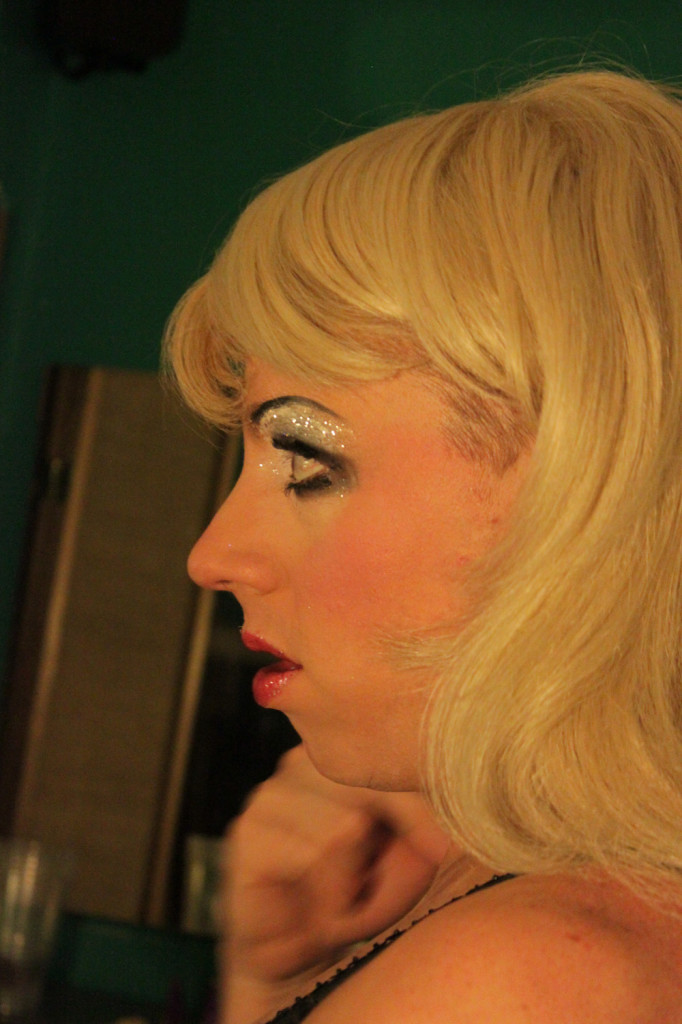Photographs I took at Derek Jarman’s Prospect Cottage back in 2014 were shown at ‘Bohemian Like Me’ LGBTQ art exhibition in Cambridge earlier this month. Read a review of the show on Varsity Mag. I lived in Cambridge between 2005 and 2011 and the queer cultural scene was not really visible, so it’s really cool that people organised this show, it got good reception, especially from young people who welcomed the visibility.
‘Tricyclic Transform’ in Grassroot Yet Glossy Mag ‘Hysteria’!
‘Tricyclic Transform’ was featured in Grassroot Yet Glossy queer feminist Mag ‘Hysteria’ issue 8. It even gets stocked at the ICA bookshop!
Buy the printed magazine of a digital copy here: http://www.hystericalfeminisms.com/store/
‘Cosmic’ wins 2nd Jury Prize on Transnational Queer Underground!
My ‘Cosmic’ photograph from ‘On the Wild Side’ won 2nd Jury Prize on Transnational Queer Underground ‘At a glance’ photo competition.
Photgrapher and judge Adrien Leavitt commented:
This photo evokes Nan Goldin and leaves me with more questions than answers. I love how still the subject’s face is but the movement in their hand.
Well, Nan Goldin, I can’t see what could be higher praise 🙂
‘On the Wild Side’ showcased in Bellyflop mag open week
Also ‘On the Wild Side’ showcased in Bellyflop Mag open week. They placed an open call for any performance related work so I applied. Now I realise they are more of a dance blog rather than general performance but, well, as long as they don’t mind 🙂
‘Motion Photography’ (a fancy name for a good ol’ gif… ;)
Stills (and outtakes) from ‘On the Wild Side’ put together as a gif animation for Saatchi online ‘Motion Photography’ submission, category ‘People’.
Model is ‘Cosmic’, but I don’t think he has a website.

Pride in the House at Lauderdale House, Highgate, London, Wed 7 – Sun 18 August
I am part of the Pride in the House show at Lauderdale House alongside painters Frixos Papantoniou and Tim Knight.
I also won a solo show for sometimes in 2014, which means I have to make new work quickly!
I will take part in a ‘meet the artist’ event from 2pm on Sunday August 18th, which is also the last day of the show. Come have a chat if you like! Facebook announcement here.
Lauderdale House
http://www.lauderdalehouse.co.uk/
Waterlow Park
Highgate Hill
London N6 5HG
Opening hours:
Wednesday to Friday: 11am to 4pm
Saturdays: 1.30pm to 5pm (subject to private bookings)
Sundays: 10am to 5pm
Finalist for Saatchi Online ‘Places and spaces’ showdown!
I made it to the 300 finalists in the ‘juried voting’ round of Saatchi online ‘Places and Spaces’ Showdown! 🙂
I’m quite proud of it because I made it without any email/facebook/twitter campaign bugging everyone I met once in a pub to vote for it in the first public voting round, I just uploaded the damn thing just before the deadline and forgot about it 😀
Documentary and Architectural Photography and Video
I have added to my website a section of documentary and architectural photography and video, separate from my ‘fine art photography’ projects. This section is not complete yet and each project contain only a few photographs so far. It contains 3 types of photographs:
1) Outtakes from my ‘Ghost House’and ‘Disciplinary Institutions’ projects, that show the buildings in a documentary way, but do not have enough aesthetic value to qualify as ‘art’. The difference may not be obvious for anyone but me, but in my main series, the focus is on the creative subjective viewpoint, whereas on those documentary outtakes, the focus is solely on representing the building and my creative input as a photographer is limited to just taking a clear photograph.
2) Photography of building of architectural and/or historical interest.
3) Documentary Photography of Raw Art environments.
In both these last cases, the places are interesting by themselves and the purpose of the photograph is solely to show their architectural features in a clear way, the focus is not on a subjective treatment of them.
I added these sections because, after reading Architectural Photography by Adrian Schulz, I thought that Architectural photography could be a promising way to start taking commercial contracts. I would like to develop this documentary/architectural section as a portfolio showcasing a commercial practice, as opposed to my fine art practice.
On September 5th, I will shoot photographs and a video inside Ketlle Yard’s House in Cambridge. This is a house that used to belong to art collectors and has been turned into a museum, but the artworks are displayed as though it was still a private art lover’s dwelling. I am interested in this space because of the unique way the former owners transformed a functional dwelling into a medium of self expression, as though they remodelled a physical space to be a projection of their inner world, filling it with art representative of their time and the interests of the bohemian social circle they were part of.
When this is done, I will display the photographs and video on my website. Something I would interesting in doing commercially would be to take photographs and videos for interior design companies and publications, and for cultural places and historical monuments, so I decided to try and find interesting buildings to train myself on as unpaid projects first.
Experiment with HDR (High Dynamic Range) Photography
I experimented with combining a series of 5 photographs identically framed but differently exposed photographs into a HDR picture. I wanted to try HDR for a long time, but I usually use shadows in a creative way in my photographs, and had to wait until I came accross a scene where the shadows and highlights were being annoying rather than interesting.
Exposed at -2
Exposed at -1
Exposed for midtones
Exposed at +1
Exposed at +2
Resulting HDR image.
I tone-mapped the HDR image using a photorealistic preset (as opposed to a high contrast image) then adjusted the curve manually. However, I found the image bland because of the even lighting, even though I do understand the use of it for a documentary picture where the focus should be on clear details throughout. I am used to dramatic shadows in my photographs and started to adjust the curve further, until I realised that I was trying to darken the silhouette of the staircase again, effectively removing the whole purpose of the HDR processing!
Therefore I decided that HDR was not an appropriate creative choice for this particular image, and started again a regular digital post-processing from the image exposed for the midtones.
In Adobe Camera Raw:
– Fill Light: 50 to get the green wall lighter.
– Brightness: +9 to slightly lighten the whole image
– Blacks: +16 to selectively darken the deep shadows.
– Contrast: +25
– Saturation: +8 to make the paint on the wall more vibrant.
Then in Photoshop:
– Selective Brightness and Contrast Correction Image > Adjustments > Shadows/Highlights. Slightly subdue the highlights on the lit wall: Amount 6% tonal Width 30%. Midtones Contrast -8 so that the green wall appears slightly lighter.
– Reduce Noise.
– No sharpening because it wrecked the ‘fuzzy light’ effect.
The resulting image.
Post-processing and enhancement of photographs (practical examples)
I have applied the post-processing workflow detailed in the tutorial I wrote to the photographs from my ‘Ghost House’ and ‘Disciplinary Institutions’ series.
Most pictures required little adjustments because I took care to expose them correctly. I discovered that my favourite tools to do slight exposure adjustments were either manually adjusting the curve, or doing selective Brightness and Contrast Correction via Image > Adjustments > Shadows/Highlights.
I did some saturation adjustments to some pictures, either on the whole picture or sometimes for a specific colour channel to bring out a specific detail from the composition. For example, for ‘Cellar Door 1’, I brought the saturation up +16 for Yellow and +18 for green. The effect is more over the top than what I usually go for but because this picture is retro-kitsch on purpose, it’s an appropriate choice.
Before:
After:
I also straightened the geometry of the corridor shots from the asylums when my tripod was crooked due to uneven floors.
Before:
After:
I used light denoising on all pictures. I also use smart sharpening on most pictures, but not on any picture featuring reflections in mirrors, dew on a window or a diffuse, fuzzy light, because sharpening destroyed any of these interesting effects.
I will now detail the workflow I used on the 3 photographs that required the heaviest processing. On most other photographs I processed, while the processing improves print quality, the adjustments are too slight to be noticeable in web quality.
Ghost House III.1
Before:
I redid the whole picure after realising that the ‘Dust and scratches’ filter blurred the image rather than really denoise it though it turned out not to make a huge difference on that photograph.
-Lens Correction.
-Selective Brightness and Contrast Correction Image > Adjustments > Shadows/Highlights. Corrected blown highlights: Amount 60%, Tonal Width 30%, Radius 30px. Midtones contrast +15%.
-Saturation +10.
-Reduce Noise, Despeckle.
-Smart sharpen Amount 50% Radius 5 pixels.
After:
Ghost House III.11
Before:
-Lens Correction.
-Selective Brightness and Contrast Correction Image > Adjustments > Shadows/Highlights. Corrected too dark shadows: Amount 15%, Tonal Width 30%, Radius 30px. Corrected blown highlights: Amount 19%, Tonal Width 30%, Radius 30px. Midtones Contrast +19%.
-Saturation +20.
-Reduce Noise, Despeckle.
-Smart sharpen Amount 50% Radius 5 pixels.
After:
Woodlawn
Before:
-Lens correction.
-Levels: burn highlights on purpose, they’re just the window.
-Selective Brightness and Contrast Correction Image > Adjustments > Shadows/Highlights. Burn highlights some more: Amount 100% tonal Width 16%.
Manual Curves.
-Saturation -49 (slightly tinted monochrome)
-Reduce Noise.
-Smart sharpen Amount 50% Radius 5 pixels.
After:
Repeat similar process with similar picture differently exposed for trial.
Before:
-Lens correction.
-Selective Brightness and Contrast Correction Image > Adjustments > Shadows/Highlights. Burn highlights: Amount 100% tonal Width 50%. Lighten shadows: Amount 29% Tonal Width 30%
Manual Curves.
-Saturation -27 (slightly tinted monochrome)
-Reduce Noise.
-Smart sharpen Amount 50% Radius 5 pixels.
The result is similar but there is less glare on the wall. I suspect this is due to the original picture, not the processing. I chose this version for printing.
After:


